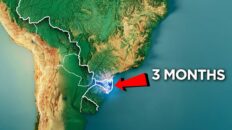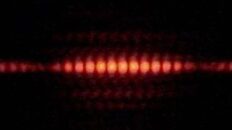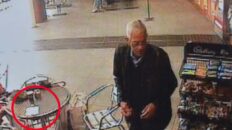In 1957, the United States began testing nuclear weapons underground in the desert outside of Las Vegas, Nevada as part of Operation Plumbbob. One underground test, Pascal B, may have put the first manmade object into space.
Robert R. Brownlee engineered the Pascal A underground test to measure the amount of fallout that would occur from underground nuclear explosions. It involved digging a 485 foot shaft into the ground and capping it with a heavy steel plate.
The explosion blew the steel plate off the ground and caused Brownlee to wonder how fast it propelled the object, so he set up a second nuclear test, Pascal B, to measure the speed of the steel cap.
The high-speed camera only recorded the plate in one frame, which led Brownlee to conclude that it must have been traveling at more than 125,000 miles per hour, or 5 times the escape velocity of Earth. The plate was never found, and this has led many to believe it was jettisoned out into space.
If this is true, the steel plate from Pascal B beat Sputnik to space by 2 months and would be the fastest human-made object of all time.
There are many who believe this couldn’t possibly be true though because at that speed the plate would have vaporized in the atmosphere just like a meteor or satellite re-entering the atmosphere at orbital velocity. So the mystery of Pascal B carries on.




Add comment